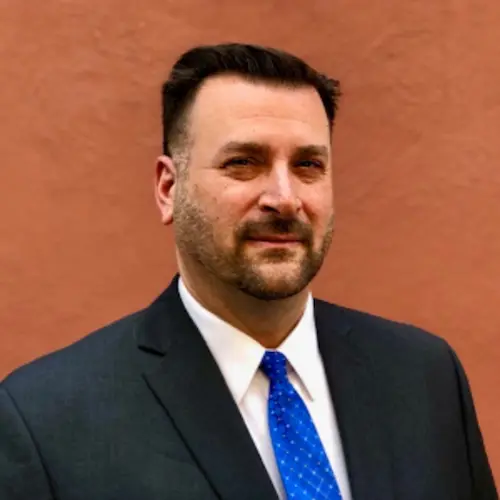
Table of Contents
Consent 101

Written By: Sarah Fielding

Clinically Reviewed By: Dr. Don Gasparini
May 1, 2023
5 min.
Consent in relationships looks like a clear, affirmative confirmation that one partner wants something to happen.
Learn more about our Clinical Review Process
Table of Contents
Consent is necessary for medical procedures, sharing your information with a website or provider, and billing you — among many other instances. It’s also required in familial, platonic, and romantic relationships for everything from sharing a personal story about you to giving you a kiss.
What does it mean to consent?
The word itself is thrown around a lot, but what is consent, really? Essentially it means that a person’s body, mind, and information belong only to them, and they can choose to remove themselves from a situation at any time for any reason. Healthy experiences provide space for people to be honest about whether they want to consent to something without pressure.
Consent is often talked about in the framework of intimate relationships and merits its own specific definition. In a healthy sexual relationship, consent acts as “an affirmative agreement between participants to engage in physical or sexual activity…It means you recognize and respect one another’s boundaries and have confirmation that a partner is excited and happy about whatever you’re doing,” according to the Rape, Abuse, and Incest National Network (RAINN).
Consent is necessary for all healthy sexual relationships. Initial consent doesn’t work as a blanket statement in a relationship. One partner consenting to have sex last week doesn’t forego their need to agree to it today. Consent can also be revoked or limited at any time. One person might say yes to kissing but then no to any other sexual interaction. They might say yes to having sex later or even now but then decide against it.
How consent is obtained and what is said are important whether in a romantic relationship or any other situation in which consent is required.
Join the Charlie Health Library
Get mental health updates, research, insights, and resources directly to your inbox.
You can unsubscribe anytime.
What do healthy expressions of consent look like?
The importance of consent can’t be overstated. A person’s consent is an expression that they are comfortable with allowing something to proceed. Without consent, a person’s boundaries are violated. In any situation, an incapacitated person can never provide consent.
At its core, consent is all about boundaries. Young people are exploring many of their boundaries for the first time and their limits — sexual and otherwise — along with it. Setting and maintaining healthy boundaries requires communication and active listening.
To this end, the lack of a “no” doesn’t equal a “yes.” An absence of objection doesn’t mean a person wants something. A “no” followed by 30 minutes of pressure from another person and a reluctant “fine” is not the same as enthusiastic, actual consent. A person can also be nervous about speaking up, especially around new people.
Pressure to consent can come in many forms for young people. Your parents might want you to consent to them being in a medical examination room with you and get frustrated if you say no. Your friends might want your consent to drink alcohol or take illegal drugs in your home and make annoyed comments if you resist. Your doctor might even ask for your consent for things you’re not comfortable with, such as trying a new medication that you’re unsure of taking. Resisting pressure to consent when you don’t want to can be challenging. It requires you to regularly remind yourself of what you want and what you value.
As for the people asking for consent, there are ways to do it that remove any undertone of pressure. There are many simple phrases you can use to ask for consent respectfully:
- “Is this OK?”
- “Can I join you in there?”
- “Can I do X?”
- “Can I try X?

Issues with consent in relationships
Gender stereotypes can cause issues around consent — especially in heterosexual relationships. Men, for instance, are told by society that they should always want to be as sexually intimate as they’re allowed to be. There’s this idea of men being always ready for sex, with their default being consenting to anything. Men of all ages, especially teenagers, don’t want to be sexually intimate at all times and might not be ready for the next level in a relationship.
On the other hand, society teaches women that sexual acts might not be as enjoyable for them as men but that they should do these things to keep their partners happy — little is ever discussed as to how to change an imbalance of enjoyment. Girls should have the space and support from their partners to explore their own sexual pleasure at their own pace.
We’ll say it again: Consent is always necessary. A relationship doesn’t give one partner unbounded rights to the other person’s body. A lack of consent is known as intimate partner violence, commonly referred to as teen dating violence for adolescents.
Sexual intimate partner violence includes any instance of someone attempting or forcing their partner to engage in sexual acts or touching, sharing explicit photos of their partner, or sending explicit messages or pictures without their consent. According to the Centers for Disease Control and Prevention (CDC), one in 12 high school students experienced sexual dating violence in the year prior. Girls, LGBTQIA+ individuals, and people unsure of their gender identity are all at a higher risk of sexual assault.
It’s critical to add that boys can also have sexual assault perpetrated against them, with the CDC reporting that about 4% of male high school students experienced sexual dating violence in the year prior. The same was true for 12.5% of girls.
Do you need more support with
your mental health?
Charlie Health can help.
How Charlie Health can help
Exploring your boundaries can be exciting and overwhelming, at times. Charlie Health offers resources about setting boundaries and support with understanding what is right for you in all facets of your life.





